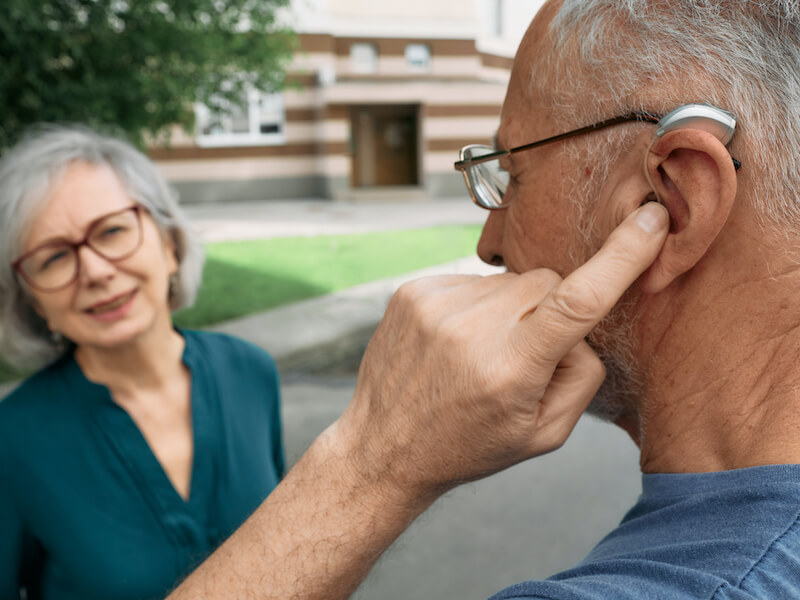
Have you ever had your internet disappear right as you’re almost to the best part of your favorite Netflix show? Instead of discovering who won the baking show, you have to watch a never-ending spinning circle. And so you just wait. Perhaps it’s your modem, could be your router, possibly it’s the internet company, or maybe it’ll just fix itself. It’s not a very good feeling.
When technology malfunctions, it can be really aggravating. The same is definitely true of your hearing aids. Most of the time, your hearing aids will provide you with the means to stay connected to loved ones, have conversations with co-workers, and keep up with your neighbors.
But when they quit working, your hearing loss symptoms can abruptly become a lot more frustrating. The technology you’re counting on has failed you. Why would your hearing aids just stop working? So how do you cope with that? Well, there are three prevalent ways that hearing aids can fail, here’s how you can start to identify and troubleshoot those issues.
Three common issues with hearing aids (and some possible solutions)
Even though hearing aids are complex technology, people might encounter three common problems with them. Here’s what could be causing those issues (and what you can do to correct them).
Whistling and feedback
So, maybe you’re attempting to have a conversation with your family or watch your favorite show and you begin to notice a horrific whistling sound. Or perhaps you notice some feedback. You begin to think, “this is weird, what’s up with this whistling”?
Whistling and feedback can be caused by these possible problems:
- You may not have your hearing aids correctly positioned in your ears. Try removing them and putting them back in. You can also try reducing the volume (if this works, you may find some short-term relief, but it also likely means that the fit isn’t quite right and you should talk to us about it).
- For individuals who use behind-the-ear hearing aids, the tubing that connects your earmold with your hearing aid might have become compromised. Take a close look to identify whether the tube might have separated or may be compromised somehow.
- The functionality of your hearing aid can be impacted by earwax buildup in your ear canal. This is a relatively common one. Whistling and feedback are frequently one result of this type of earwax accumulation. If possible, you can try clearing some earwax out of your ear or consult with us about the best way to do that (do not use a cotton swab).
Depending on the root cause of the feedback, we can help you resolve these issues if you can’t figure them out on your own.
Hearing aids not producing sound
Your hearing aids should make, well, sound. That’s what they’re made to do! Something has undoubtedly gone wrong if you can’t hear any sound coming from your hearing aid. So what could be the explanation when hearing aids work but no sound comes out? Here are a few things to look for:
- Power: Look, we’ve all forgotten to turn the hearing aids on before. Be sure that’s not the problem. Then you can eliminate that as possible issues.
- Batteries: Make sure your batteries are fully charged. And whether your batteries are rechargeable or not, it may be worth switching them out for new ones.
- Your settings: Cycle through the personalized settings if your device includes them. Your hearing aids might think you’re in a huge space when you’re actually in a little room because the setting isn’t right. The sound you’re hearing might be off as a consequence.
- Earwax buildup: Here we go again with the earwax! Examine your device for indications of earwax on the microphone or speakers or any sensitive bits. Keep your device really clean.
We are here for you if these steps don’t clear up your issues. We’ll be able to help you identify the next steps, and whether maintenance, repair, or replacement is required.
Painful ears when you’re wearing your hearing aids
What if your hearing aids work perfectly, but whenever you put them in your ears, your ears begin hurting? And you’re likely thinking: why do my ears ache when I wear my hearing aids? This kind of discomfort isn’t exactly conducive to using your hearing aids on a day-to-day basis. So, what could be causing it?
- Time: Getting used to your hearing aids will take some time. Each individual will have a different adjustment period. When you first get your new hearing aids, we can help you get a reasonable idea of the adjustment period you can anticipate. If uncomfortable ears continue, speak with us about that as well!
- Fit: The most evident issue can be the fit. Naturally, when the fit is nice and tight, your hearing aids will work best. Which means that there can occasionally be pain involved in a poor fit. Some hearing aid models can be fit to the specific shape of your ears. The better the fit, the fewer problems you’ll have with discomfort over the long haul. If you come in for a consultation, we can help you achieve the best fit for your device.
Bypass issues with a little test drive
Before you commit to a set of hearing aids, it’s a good idea to try them out for a while. Most of the time we will have loaner pairs for you to try out before you make a decision.
As a matter of fact, we can help you determine the best kind of hearing aid for your needs, adjust the fit to match your ears, and help you manage any ongoing problems you might have with your devices. In other words, when your devices stop working, you’ll have a resource that can help!
And that’s a lot more than you will get from an over-the-counter hearing aid!